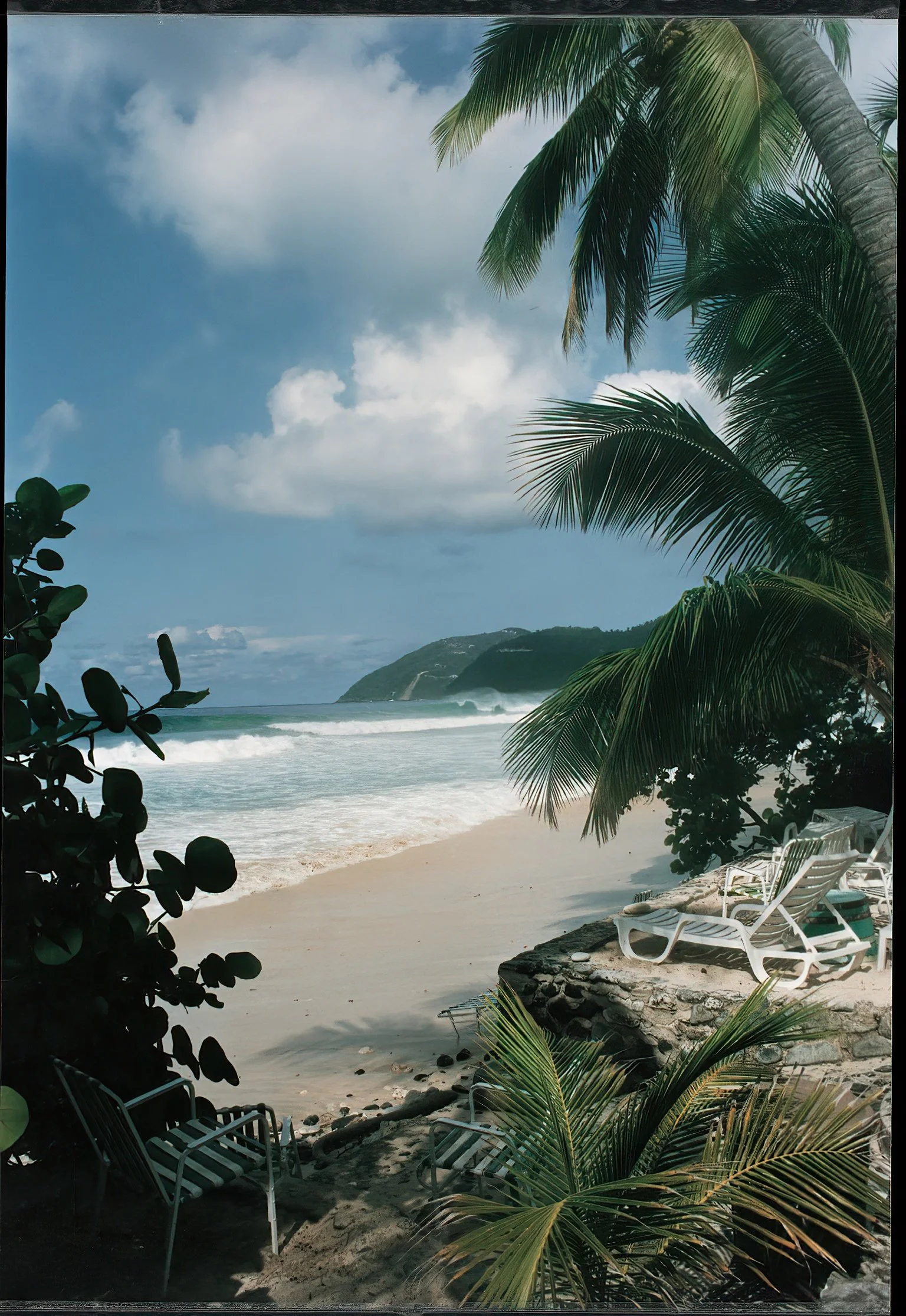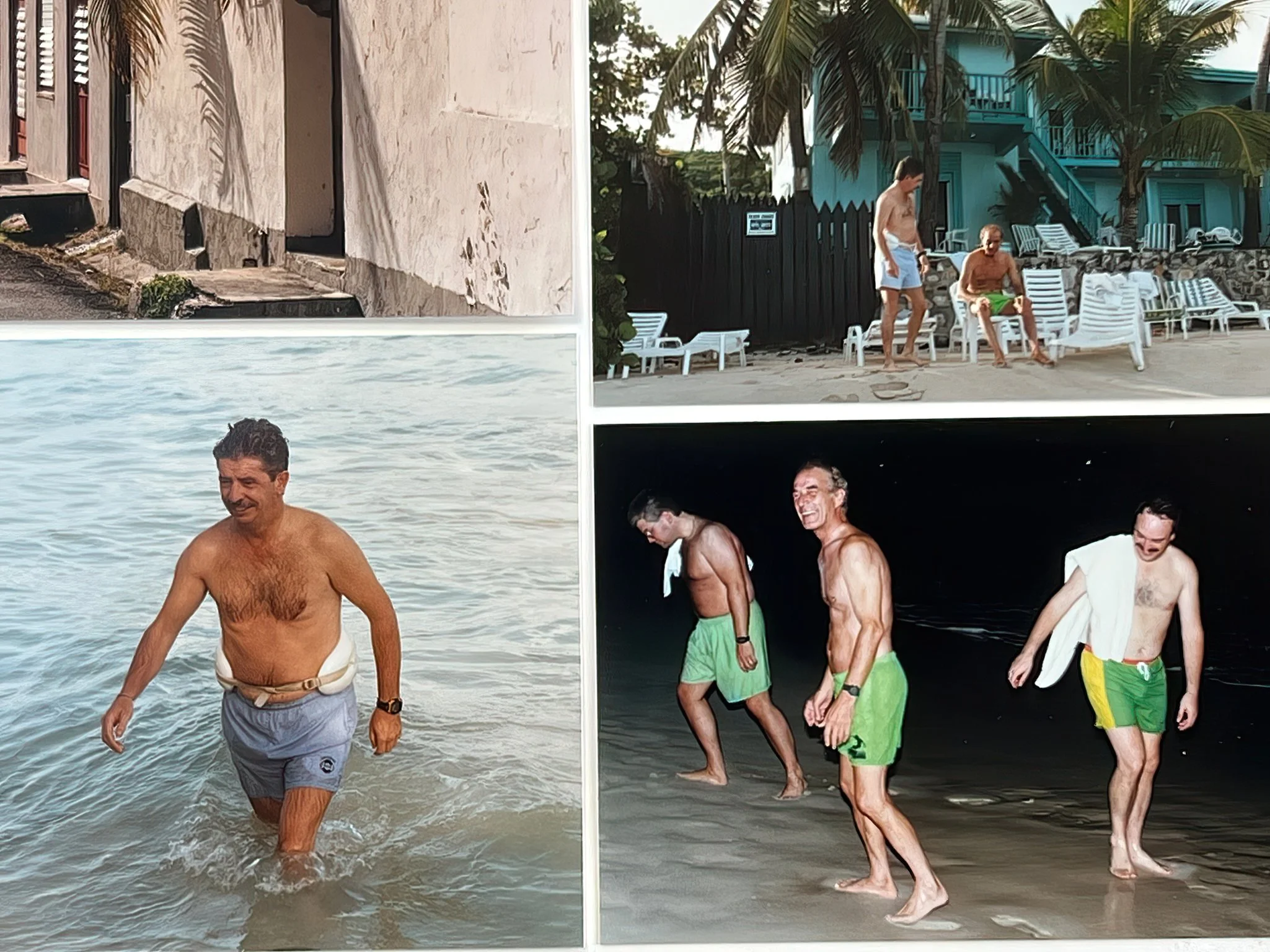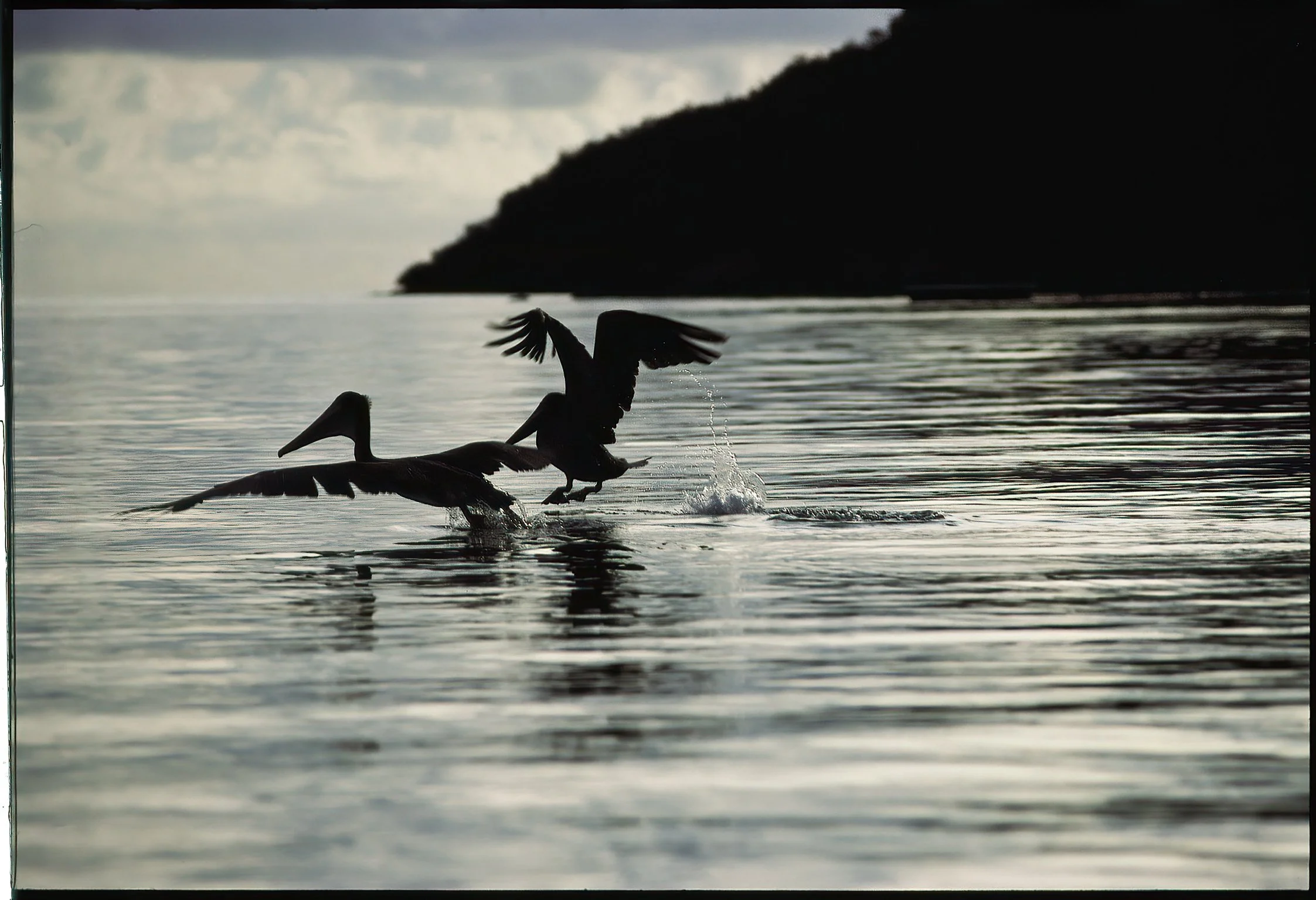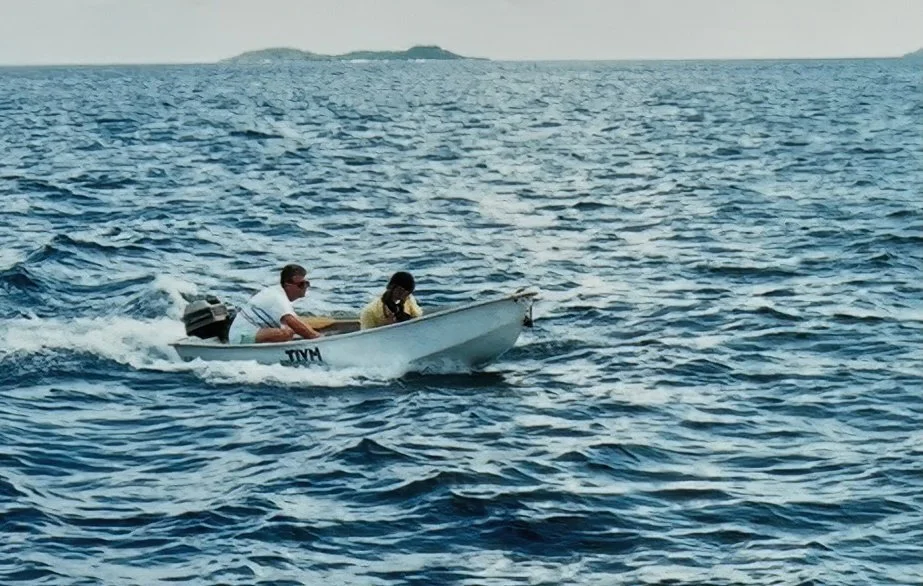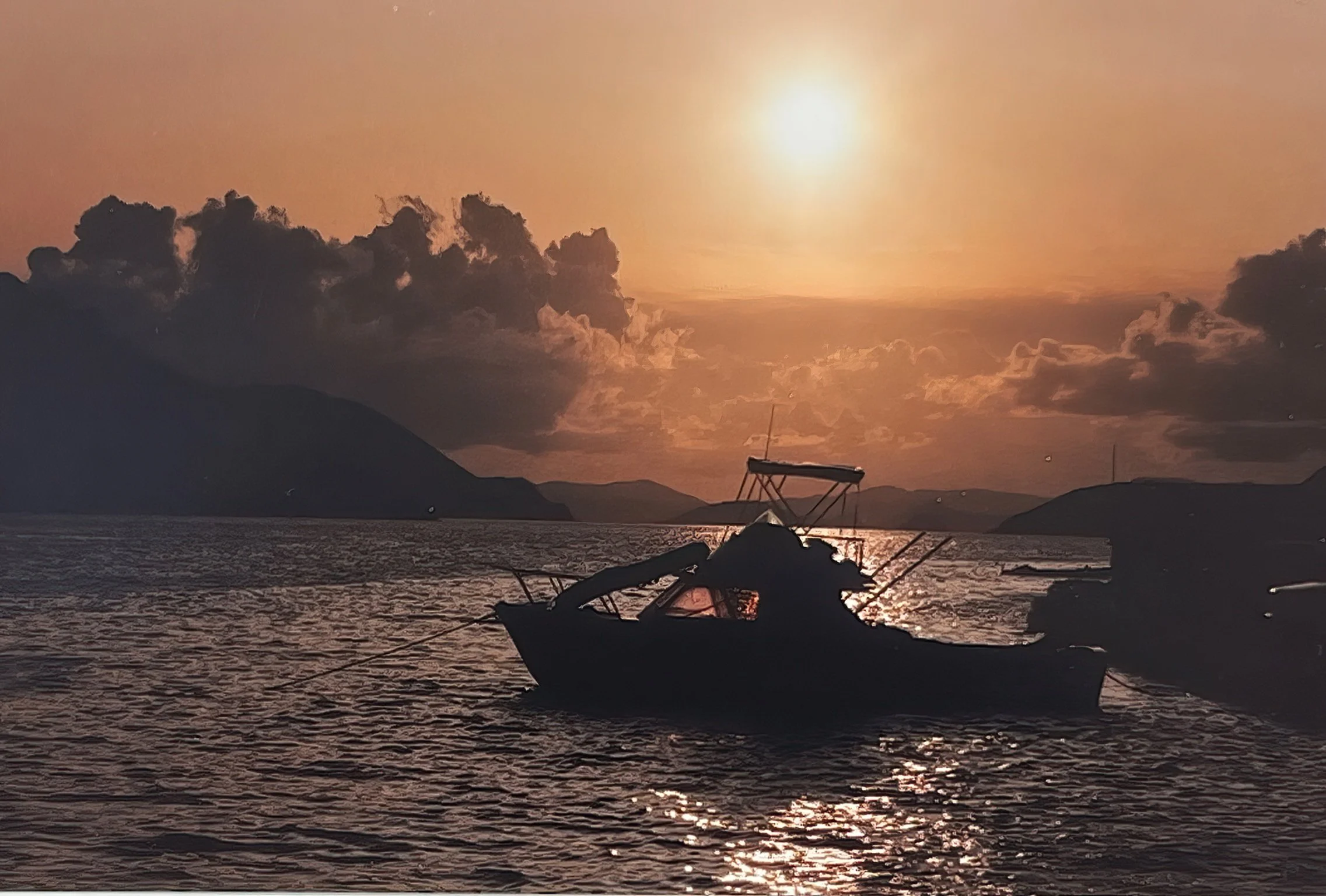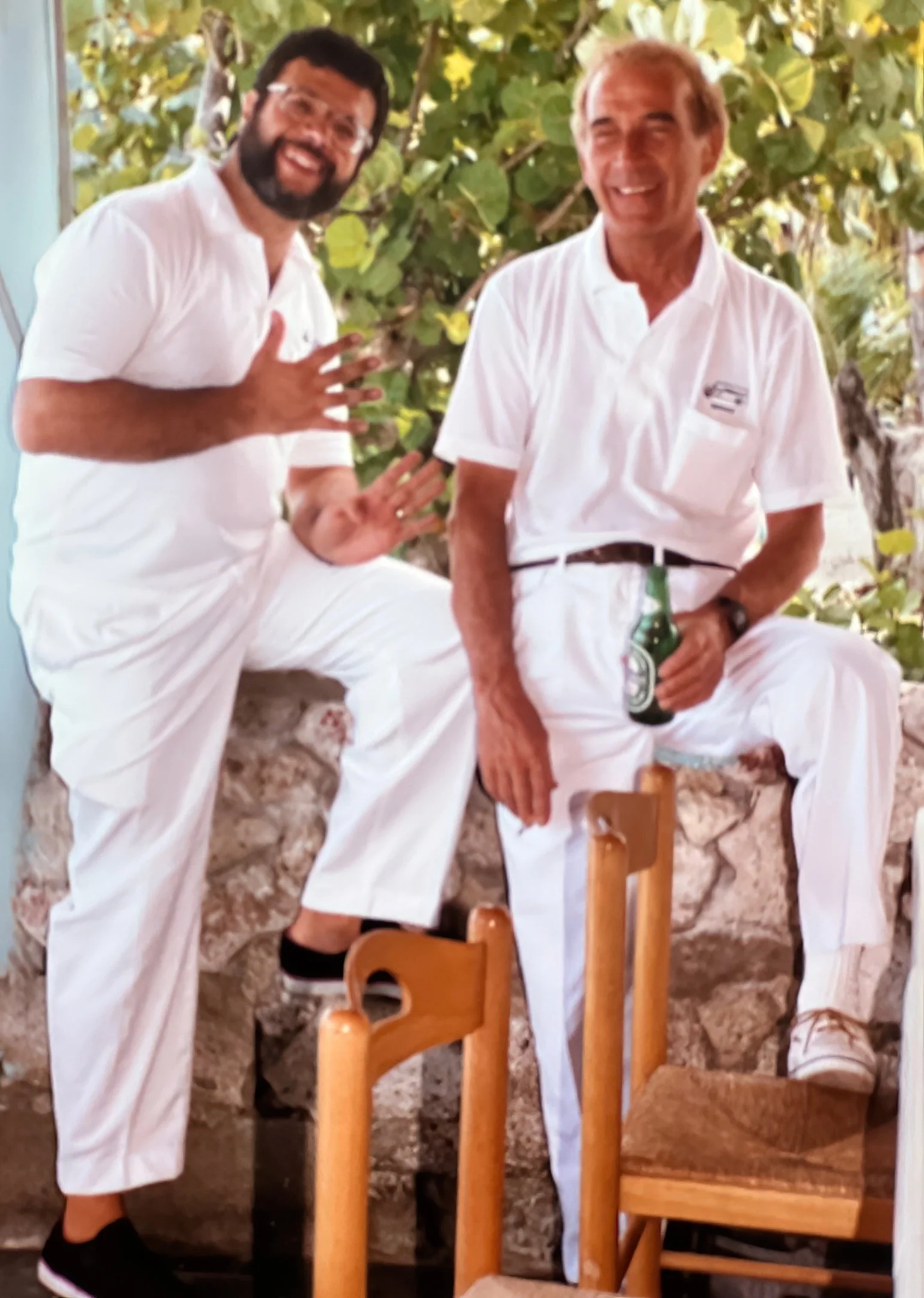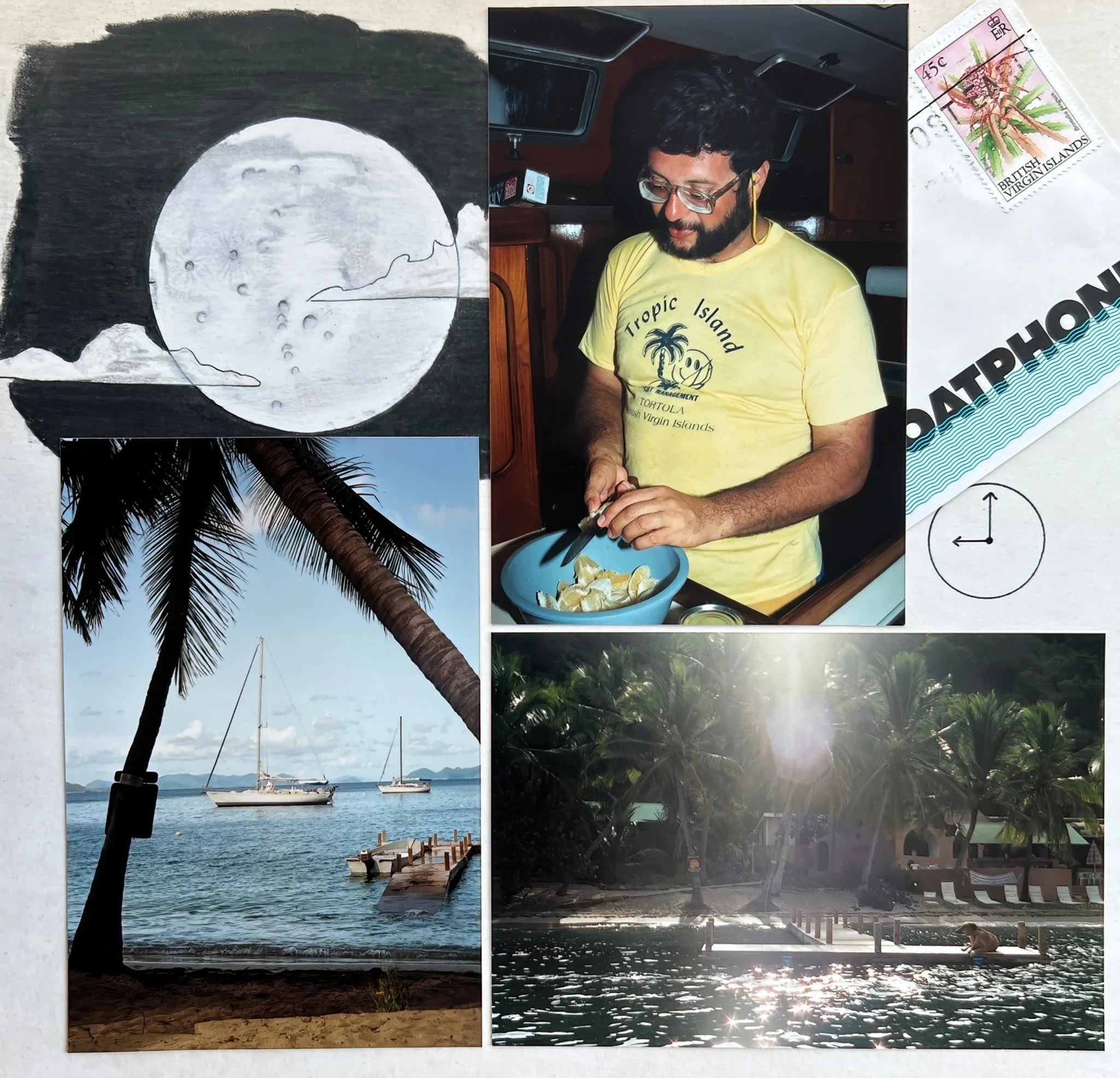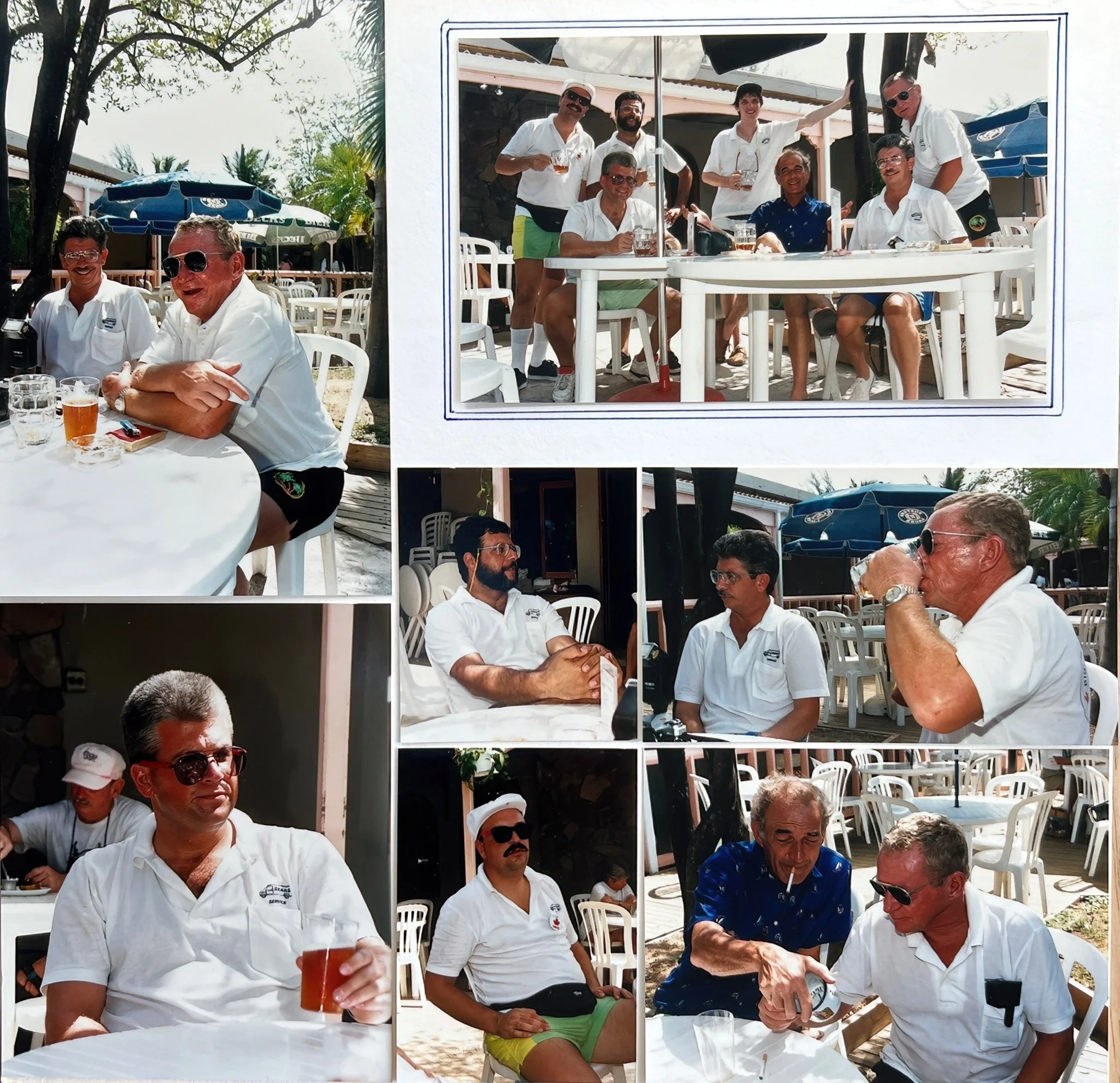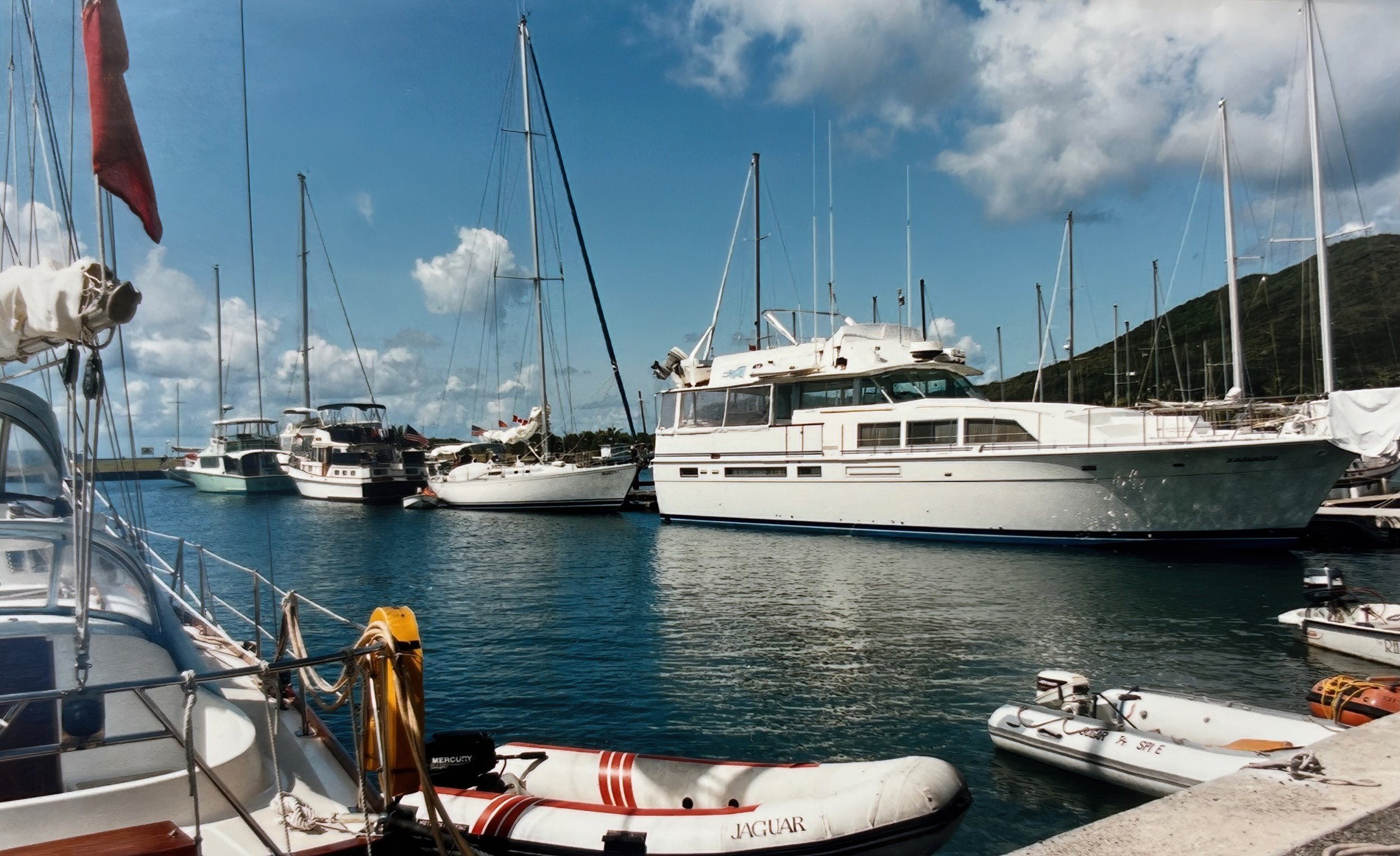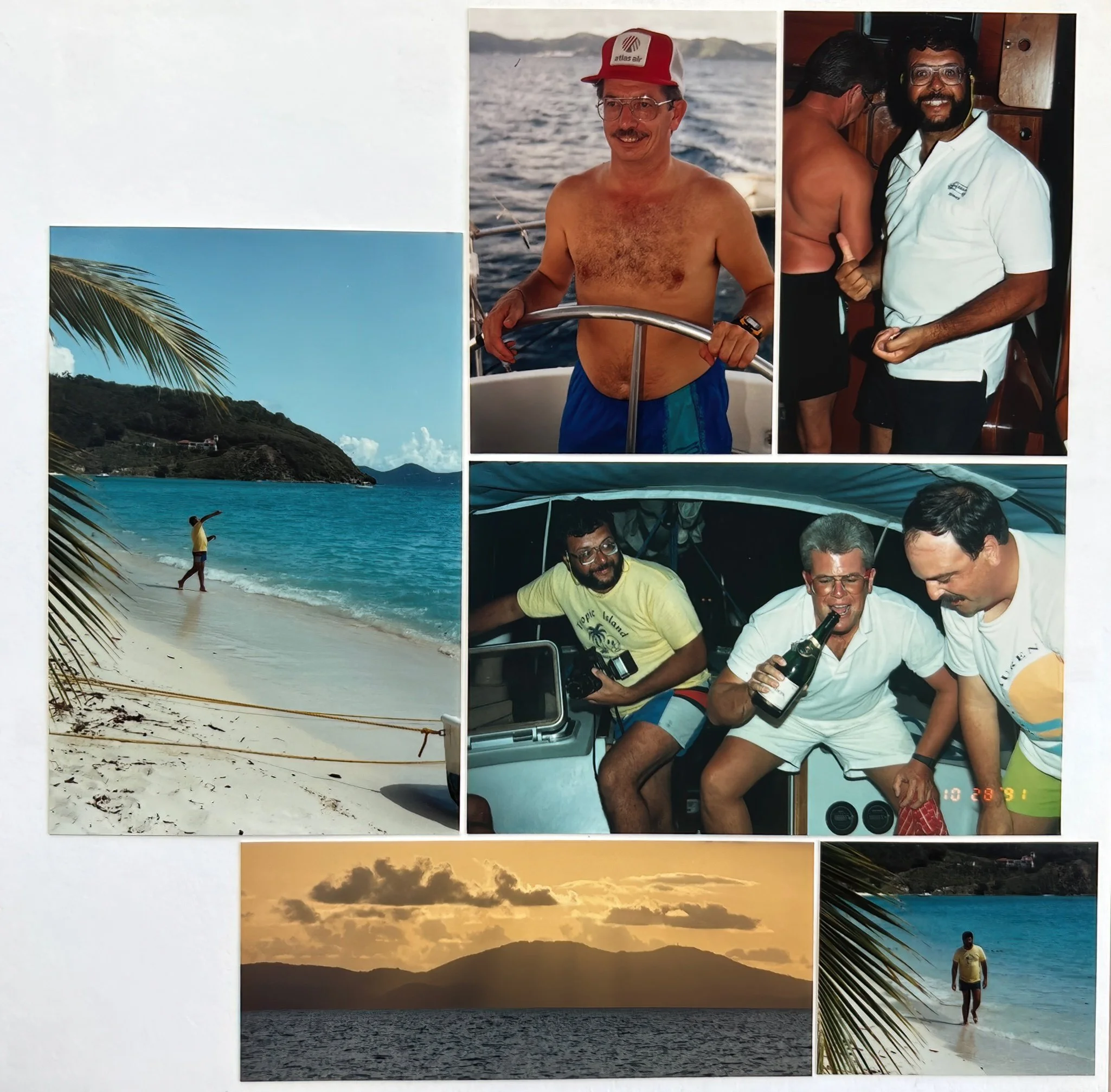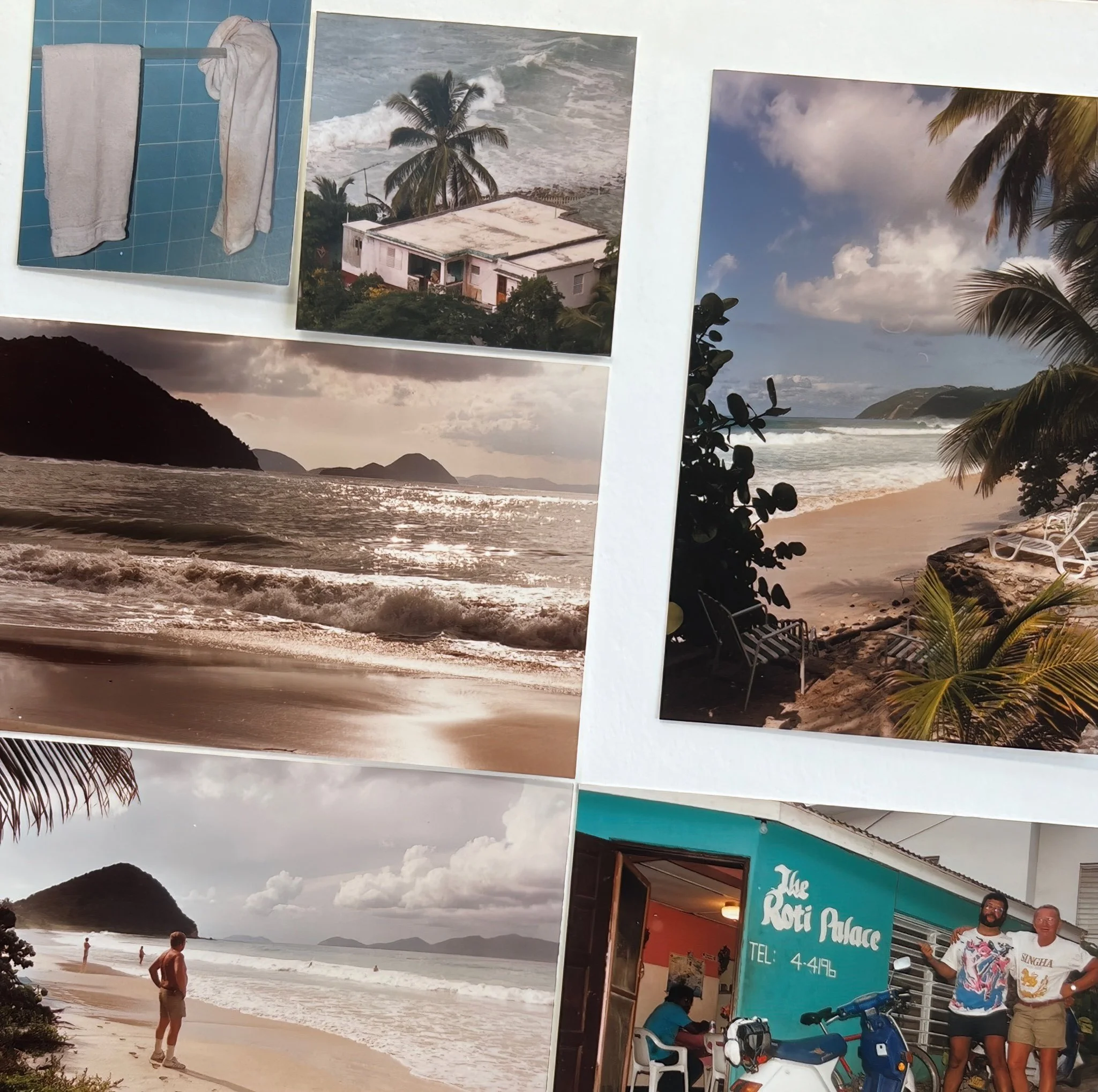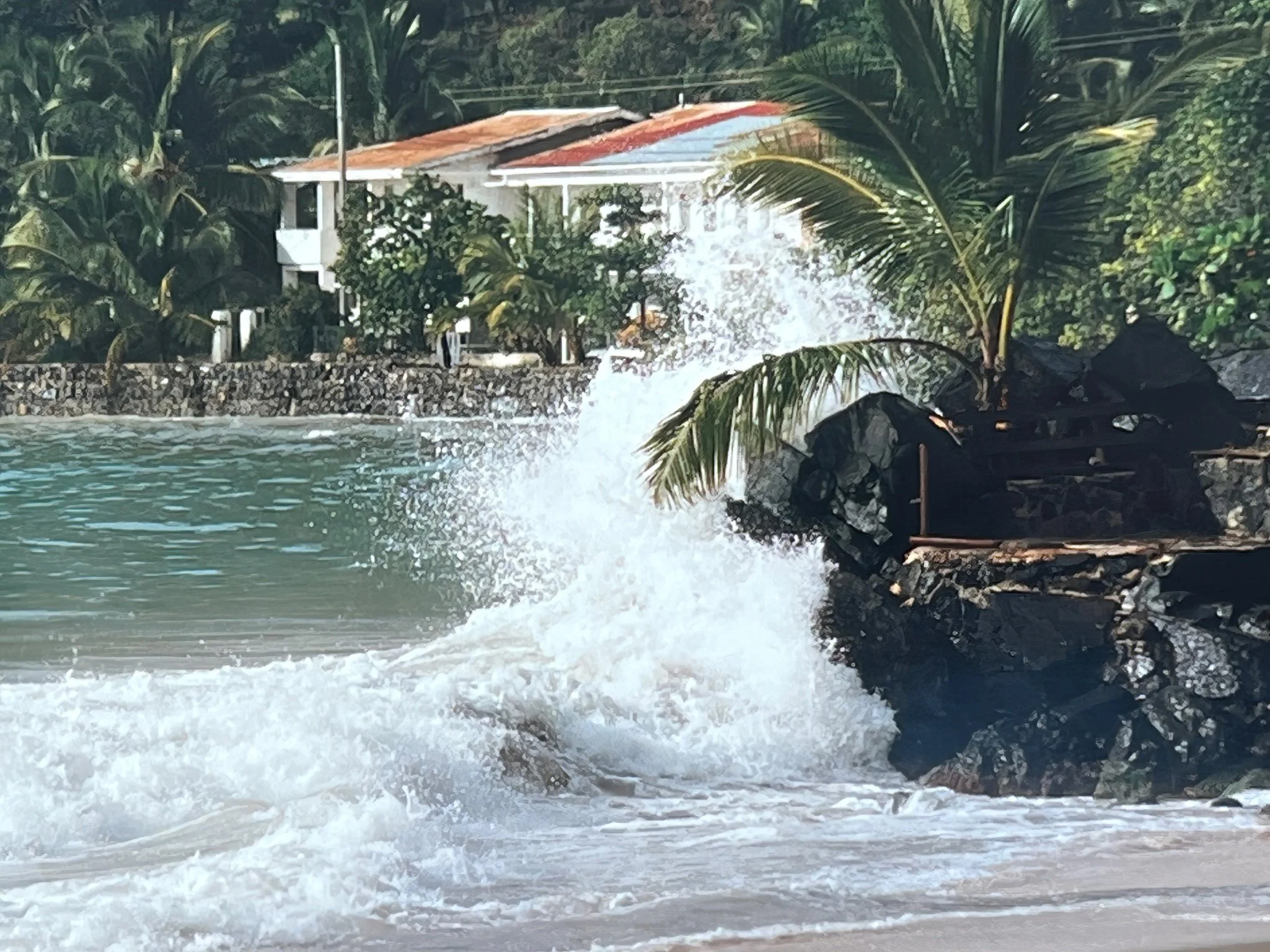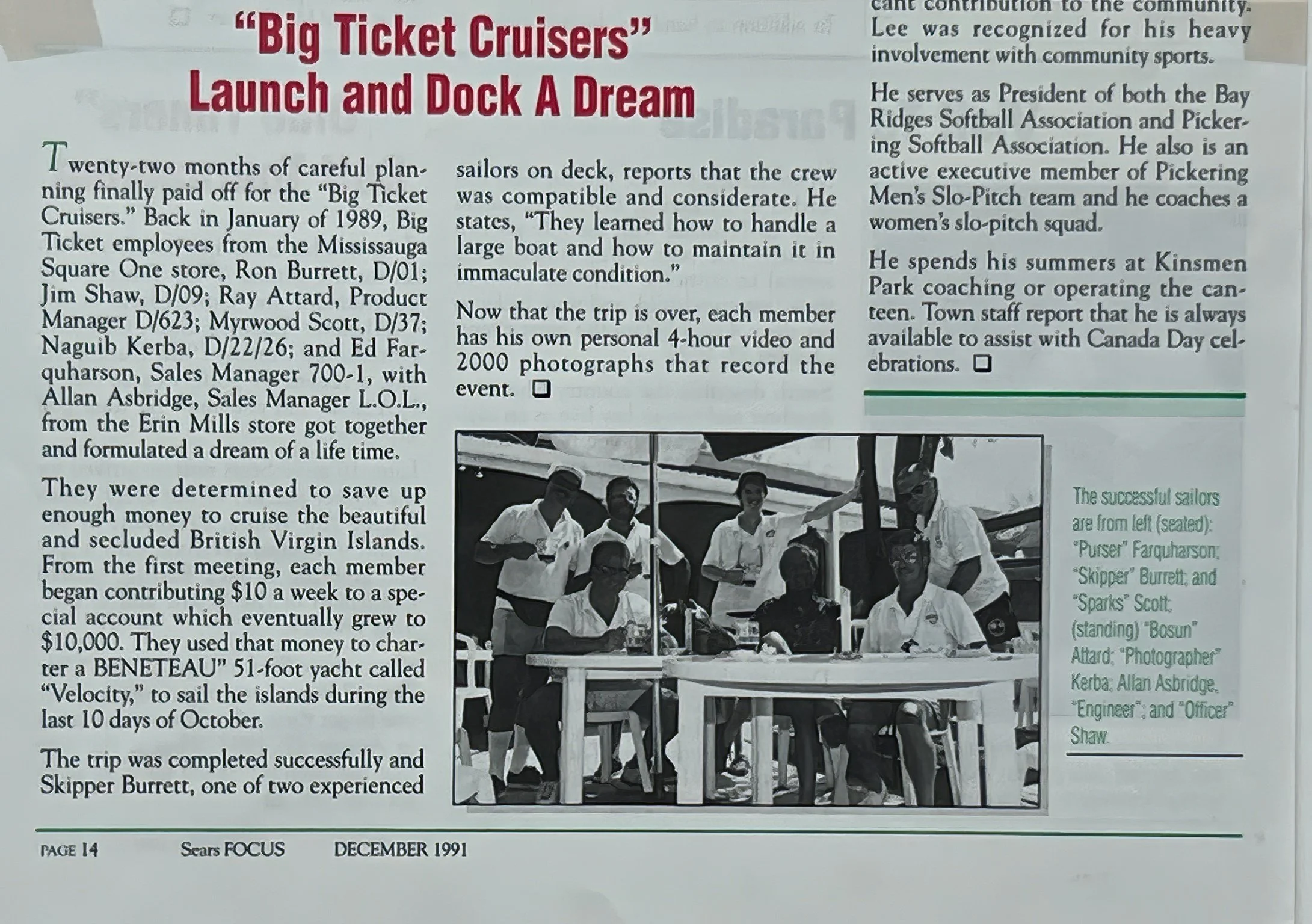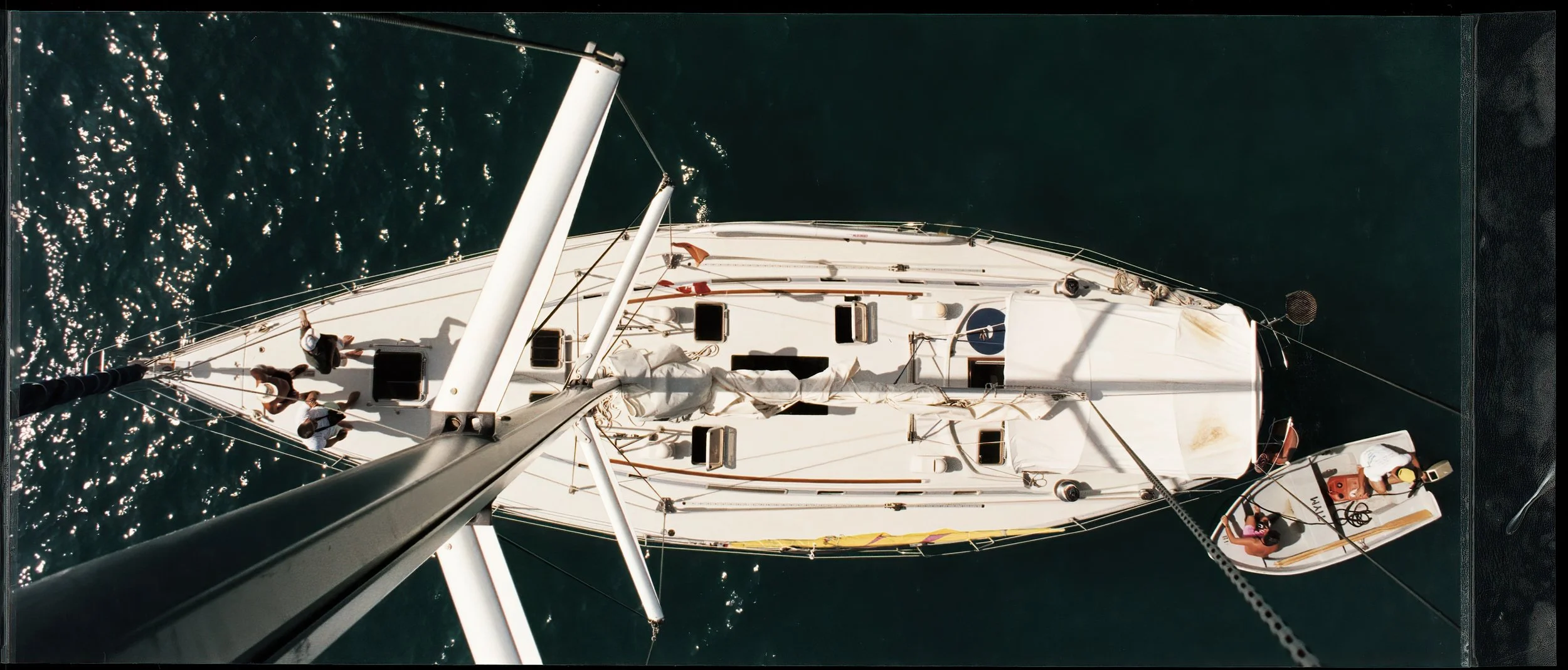The Big Ticket Cruisers
A Trip of a Lifetime for $50 per month
I started working at the Sears store in Square One on May 2nd, 1982. I left Sears in 1994 to become a full-time financial planner. I am proud to say that the friends I made at that store have been lifelong friends and have truly enriched my life.
We had the most fantastic cast of characters working out of that store. We not only worked hard but had fun being there. I was the social club president for two years.
Fishing trips with the boys have now become annual affairs for the past thirty years. We would go ice fishing as a group, play poker monthly and hardly needed an excuse to have a party. We had Euchre tournaments called the “Tough Run Committee,” complete with a trophy.
We also managed to play Euchre at lunchtime and often had as many as eight people playing in the lunchroom. At lunch one day, Ron Burrett started showing his latest holiday photos. Ron and his wife, Nikki, had just returned from a recent sailing trip to the British Virgin Islands. They chartered a 36' sailboat and sailed by themselves around the islands for a week.
My eyes bugged out, the hair on my neck stood up, and my jaw dropped. All I could say was, “Oh my God, would I love to do that!” One thing led to another, and a few days later, Ron came back to me with an idea spurred by my bugged-out eyes.
How would you like to go sailing in the BVI? In the lunchroom, Ron approached me and said, “How would you like to go to the British Virgin Islands?’ “You’re kidding. Right?” an incredulous me responded. “I would love to, but I can’t afford it. My wife would never permit me. Wait, I don’t even know how to sail.” Ron had anticipated all those questions and was ready with answers:
We would use coffee money to pay for the trip. If we give up $10 per week worth of coffee, we wouldn’t have to dip into family funds.
Your wife will think of this as a break for her. Instead of our regular four-day fishing trip, we make it eight days. We’ll call this “the mother of all trips!”
If we have five or six guys along on the trip – the everyday expenses will no longer be prohibitive.
There is only one other sailor in the gang, Jim Shaw. I already approached him first, only because if there weren’t another experienced sailor along on the trip, we wouldn’t go.
I’m anticipating it will take us one and a half to two years to accumulate funds, and in that time frame, we would have sailing lessons and even go on Jim’s boat for practice.
Safety comes first, and I have many other rules to alleviate any concerns. That includes addressing the wives’ problems.
Next came the list of people to invite – compatibility was the main criterion. Our lives would depend on everyone being on the lookout for others. We had to trust each other because our lives depended on each other.
Five guys signed on and committed to the $40 to $50 going into a joint account monthly. We also started meeting quarterly. There were commitments made for specific dates. You would catch up or drop out on those dates if you did not contribute. We started with five guys and grew to seven as two others came on board. Two dropped out; then, two more came on board. The only condition for newcomers was that you would have to ante up to the incremental dollar figure at the time.
We sold “Big Ticket” items such as appliances and carpets. Three were management. The group came to be known as “The Big Ticket Cruisers.”
Ron turned out to be the best pure planner I have ever met. In my thirty years in the profession, I have met many professionals who could learn something from Ron.
Our goal was to not pay for anything other than souvenirs for home. During the trip, Ed, our purser, would pay for the expenses from the shared pool. Ron calculated several things to arrive at the cost per person:
Airfare.
Accommodations for the nights we were off the boat.
Ferries and cab fare to and from waypoints were factored in as well.
Calculating all the boat expenses, he knew the share per person for five, six or seven guys in advance.
He calculated food provisions for the onboard meals. We were not going to suffer on the food front.
Food and drink onshore.
Most importantly, he surveyed us to determine how many bottles of beer each of us would likely drink in a day. He asked about our drinks of choice for dinner – red or white wine and how many glasses. Then, after aggregating, the total of our wishes arrived at a cost and, more importantly, a shopping list for each of us. We would stop at the liquor store and be in and out in ten minutes. Considering the purchased amount, this was an impressive feat – it was a marvel of good planning and execution.
In retrospect – we never had an easy selfie option in 1990. It was agreed that your best pictures were taken with someone else’s camera. At the end of the trip, we would each get double or triple prints and donate the extras to me. I would make a unique album for everyone with the pictures that would work best for them. At the end of this fantastic adventure, we had 2,000 photos and tons of videos.
The final sign of how well our Skipper Ron planned the trip was to have only two cars going to Buffalo airport. Ron arranged for a pre-cellphone pick-up system. Ed would pick up Ron; as they left Ron’s house, his wife would call Jim and tell him that his chauffeur would be at his door in fifteen minutes. Once there, Jim said his goodbyes and Judie called Myrwood; it was my turn. Ray picked up Alan in another car and met us at my house. It’s as if we were on a highly secret mission – or a bank robbery!
What was truly fascinating was the general euphoria of those around us. It was as if the entire store was going with us. As momentum built, the service department donated white shirts for the cruise. I still have mine! Ray got Northern Telecom sailor caps. I had a calendar on my desk and crossed off the days.
Trips at first seem far away; then suddenly, they are here. One goes on the trip, and you are back at work before you know it. Few expeditions have lasting memories – but exceptional ones stay with us forever! Thirty years later, I still remember the “Big Ticket Cruisers.” I marked “X”s on my calendar daily for two months – with the final mark: GONE SAILING!
Several magical things also happened on the trip. We never stayed all together all the time. We broke into groups of three, four or five to a group. It wasn’t the same two or three together – it was the opposite. We felt the same degree of comfort as all the sailors. We indeed developed into a fantastic sailing crew. We all participated.
As the guy who loves to cook, I volunteered to prepare the first “Captain’s dinner,” a surf and turf extravaganza. Everyone took turns preparing the main dinner course – we all chipped in.
The images included here are from my photo book of the trip. I have numerous others, but these will still represent the 29 rolls of film I shot that trip. I felt like I was on a National Geographic assignment. Everywhere I turned was a picture to be had. THE GUYS GAVE ME EXTRA ROLLS when I ran out of the film. We barely made it back.
I must share with you the “ZONE” photographers find themselves in. At the very least, this is my concept of it. EVERYTHING LITTLE THING is a picture of when I was in that zone. I get lost in action; I see the light and dark. I take in texture and pattern. I am losing time while in the zone, which is not unusual. Knowing this makes me tick; the time spent is pure joy and not wasted. Some people accuse me of viewing the world through the lens and not living in the moment. But for me – the moment is enhanced and memorialized because I was so immersed in it - it was about capturing the moment's essence. These are my captured moments.
I get the biggest thrill in sharing those captured moments with those who were unable to go or didn’t want to be there for some reason. Not everyone is willing to wake up to the sun when on holiday. I want to go on a photo adventure 24 hours a day.
Come with me on the rest of the trip of a lifetime! I hope you enjoy it.
Who needs to be original? A full moon watch, inspired by the movie "An American Tale."
In the 1986 animated movie, ”An American Tale,” Fievel and his sister sing about missing each other, “Somewhere out there.” They both looked at the moon and thought of each other. As it happened, there was a full moon at 9:00 PM mid-trip. We orchestrated the same event with Chris, who was seven then, and Tara, the ten-year-old, plus Donna. We would all look at the moon and think of one another.
What was lovely – at one time or another, all the fellow sailors came up to me to let me know that they were keeping an eye on their watch and would remind me at nine pm.
Two funny things happened near the baths – we wanted to go fishing but forgot to buy bait. Of course, I came through with a secret weapon – celery. It is incredible what hungry fish will eat. We caught all sorts of fish with the celery. This, in turn, created a monster in me where everything is fair game to put on the hook.
My favourite was putting gummy worms on the hook, pretending it was artificial bait. I would cast the line into the water, then eat the tail off the hook. Unfortunately, my fishing buddies know me by now, and no one is surprised anymore. I still try these antics, just for my chuckle. Some kids will never grow up.
The next part took 70 million years to orchestrate just the perfect scenario. The baths were created when molten lava seeped through the young Caribbean Sea. When it came into contact with the cold water, it solidified into granite. The result was boulders in all sizes and shapes. These boulders, over time, became part of the shore and created areas where you could walk through in water up to your waist and beyond.
It also created a perfect echo chamber – Jim Shaw, our first mate, started an ideal song for the location. “Dayo,” Jim sang, and to his surprise, the most resounding voice imaginable came back with his rendition of “Dayo.” Before long, we heard the whole song with Jim and the stranger exchanging lines. Eventually, the stranger, who sounded at least six foot five and weighed a lot, came out between two rocks. He was a slightly built chap that was about four foot three. Despite our surprise based on assumptions, we had a friendly chat with him.
Here, someone asked us what boat we had arrived on. A couple of us blurted out the answer, “Velocity 1”. At that point, Skipper Ron took us aside and took us to school. When someone asks you what boat you’re on, they ask you the following questions: “Who built it, and how big is it?” Your answer should be “The 52’ Beneteau!” Remember, it is likely the most significant and fastest boat in such a harbour, be proud of it!
Funny enough, the next night presented us with the opportunity to practice. When someone asked what boat we were on, I’m sure at least four of us shouted in unison – “It’s the 52’ Beneteau!”. It was such an arrogant delivery; I still feel childish about it.
On a sunrise photoshoot with Ed, the Skipper of the dinghy. He has skippered water vessels - canoes, sailboats and aluminum boats- to give me photo opportunities. It has been a genuinely blessed team with many successful shots.
Skipper Ron wanted a photo of the boat under full sail with him on the helm. Sailors were generally not able to do a boat selfie. We were different; we had an accomplished camera crew on board. To get the shot, we needed to be under full sail. Only one problem: that 52' Beneteau, under full sail, sliced through the water beautifully. That wouldn't be the case for the dinghy and its crew. That would never stop this intrepid crew.
We pulled the dinghy up to the leading boat under full sail. Ed, then Naguib, the pretend National Geographic Photographer on assignment, had to jump from one sailing vessel to another with cameras in hand. We untied from the main ship and played chase.
We were bouncing in the boat like rodeo cowboys on a bull. We managed to stay up with the big boat and got some nice shots without losing equipment or people overboard. After all, we are an extraordinary photo team.
After our photoshoot and a nice open stretch of sailing, we arrived at Sandy Cay; it ranks in my mind as one of the most amazing beaches I’ve ever been on, anywhere. It's small but unique.
After our swim, we rushed to our next destination – Jost Van Dyke’s Great Harbour. Skipper Ron had a theory about where we should move. We needed to be upwind and up-current. I don’t know anything about sailing and the environment today. But in 1991 – whatever you can release by way of body waste was done overboard. His thinking was upwind, and being upcurrent meant the cleanest water. Those that moored last got the destruction of the rest.
Risk? What risk?
I have used this story to explain risk mitigation to my financial planning clients for the past thirty years.
Before we left home while researching photo ideas, I saw a photo taken from the top of the mast; I was going to do that! The only problem? I’m afraid of ladders and heights! I told Jim and Ron that taking a shot from the top of the mast would be amazing.
Another Bucket list item was added to the trip.
Jim brought a bosun’s chair for us to go up the mast. Ron thought the best place for going up the mast was in Great Harbour in Jost Van Dyke. That morning, it was sunny, as usual, with calm seas. Everything was perfect for the endeavour. We would tie the seat to the mainline – the one used to hoist the sail that propels a fifty-two-foot sailboat. A second, the safety line, was added as a precaution. I suspect that none of us would have been able to climb the mast physically, but we could be hoisted with the strength of the others on board. Ron, as the Skipper, took it upon himself to go first. This would ensure that all is working fine. Jim went next. Others checked and rechecked the safety harness as we got into the seat. Then, the others started the hoisting process. Ed went next with the video camera. I still think he was nervous, and I will never forget him with his now-famous commentary. The comment. “This is beautiful up here, but it will be way more beautiful when I get back down.” It's good practice for his current BBC broadcasts today.
Please make no mistake; I was getting more nervous. When it was my turn to be hoisted – to relax and minimize the risk in my mind – I thought of all the risk mitigation we went through to make this a safe activity:
We used the heaviest, strongest mainline, the one that lifts the sail and propels the boat
We used a secondary safety line
We checked and rechecked the harness
We tested it
Ed, at the time, weighed more than I did
I trusted these guys with my life
It was to take a photo that I wanted
Off the deck, I went. At ten feet, no sweat. At about the twenty-foot mark, I passed the first spreader. It was no problem; I can do it. Forty feet was delicate as I passed the second spreader; the view was spectacular. At fifty-five feet, I was as close to the top as I could get to shelter. I made it! The guys made it; I was going along for the ride!
This was amazing, the spectacular view, the other boats in the harbour – I could stay there for a long time. To get the shot I wanted without my feet in the picture was a pretty acrobatic act. I had to lean in one direction and kick my feet off in another, hang on to the mast with one arm and take a picture with two hands - got it!
One other thing happened – after I got the shot, thankfully. A big motorboat came past our boat at high speed. This created a wake. On deck, the rolling of the ship was relatively gentle. Sixty feet up, it was a different story, but by then, nothing could phase me.
That’s precisely how you minimize risk when investing:
Know what your goal is beforehand.
Understand that your risk is appropriate for the task at hand. Take the minimum amount of trouble to get the job done. You don’t get a fifty percent return and the risk involved if you need only six percent.
Take precautions – diversify.
Ensure that you understand what safety measures have been taken. Use the appropriate pool of money for the job. Don’t use long-term cash in short-term investments.
You don’t have to enjoy the ups and downs or side-to-side motion, but you must know it will happen. You don’t know when, how hard, or how long it will last. It is a part of the journey.
I will eternally thank Skipper Ron and First Mate Jim for making this trip possible. I will also hold each of the others in a fond place in my memory bank and heart. There will always be that special bond between the trip and our journey.
We all consider this trip “The Trip of a lifetime!” Heck, I am reliving it now by writing this article.


